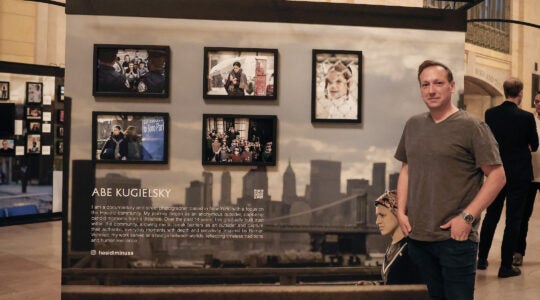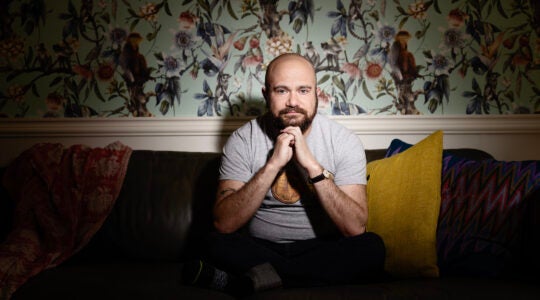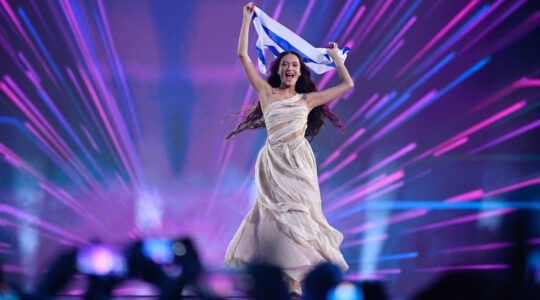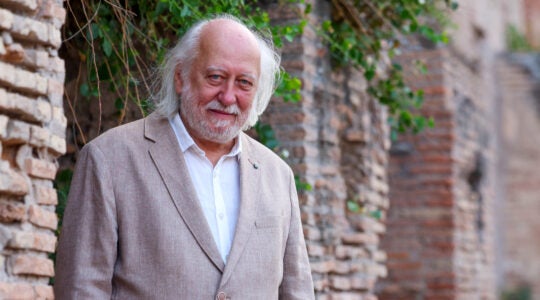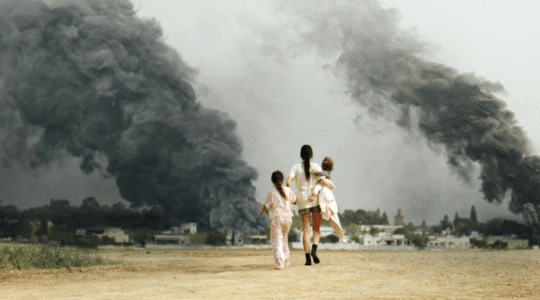This week marks the 50th anniversary of the opening of the 1964 World’s Fair, held in the New York City borough of Queens.
In the years leading up to the fair, whose theme was “peace through understanding,” Israel’s participation was uncertain. The Israeli government reserved a pavilion location in 1960, but backed out for budgetary reasons in 1962. Ultimately, the American-Israel Chamber of Commerce and Industry stepped in, creating the American-Israel pavilion.
Located in the fair’s international area, at the crossroads of the Avenue of Europe and the Avenue of Africa, the pavilion was described by the official fair guide as follows:
This spiral-shaped building, with boulders hewn from King Solomon’s Mine set at its entrance, curls around itself like a chambered nautilus in red mahogany. The winding walkway conducts the visitor through 4,000 years of Jewish history. Successive rooms re-create the sights and sounds of various epochs by means of music, artifacts and dioramas. The winding walkway conducts the visitor through 4,000 years of Jewish history. Successive rooms re-create the sights and sounds of various epochs by means of music, artifacts and dioramas.
For an entry fee of 75 cents, visitors got a 20-minute tour from biblical times to “the streets of Haifa in 1964,” could shop for “hand-wrought jewelry, ceremonial religious objects and hand-embroidered blouses” and could buy “Israeli specialties, such as falafel, a spicy vegetable patty eaten between slices of soft, round bread.”
The splendor of the American-Israel pavilion was overshadowed, however, by Jewish communal outrage over a mural inside Jordan’s pavilion. Featuring a drawing of a Palestinian refugee mother and child, the mural displayed a poem urging viewers to “hear a word on Palestine” and “help us right a wrong.” Claiming that the region’s residents lived peacefully before “strangers from abroad, professing one thing, but underneath another, began buying up land and stirring up the people…,” the poem also criticized Israel’s use of the Jordan River, saying the Jewish state was threatening to “make the desert bloom with warriors.”
JTA closely followed efforts by numerous Jewish groups to have the mural removed. While Israel’s defenders gained the support of the New York City Council and various city courts, they did not persuade Robert Moses, the “power broker” who was the fair’s president. While the mural stayed, the Jewish groups got permission to distribute leaflets outside the Jordan pavilion.
Amid the controversy, someone removed Jordan’s flag from its pavilion, replacing it with a pennant from the American-Israeli one.
JTA reported:
Police leaned to the theory that the theft of the Jordanian flag and the substitution of the American-Israeli pennant was the work of pranksters and that it was not connected with a long-running dispute over a controversial mural in the Jordan Pavilion. Jewish organizations have protested that the mural is anti-Israel and anti-Semitic and three suits against the mural are pending in New York City courts.
American-Israel Pavilion officials said they knew nothing about the incident and that if it was “a practical joke, ” it was “in poor taste.”
JTA has documented Jewish history in real-time for over a century. Keep our journalism strong by joining us in supporting independent, award-winning reporting.
